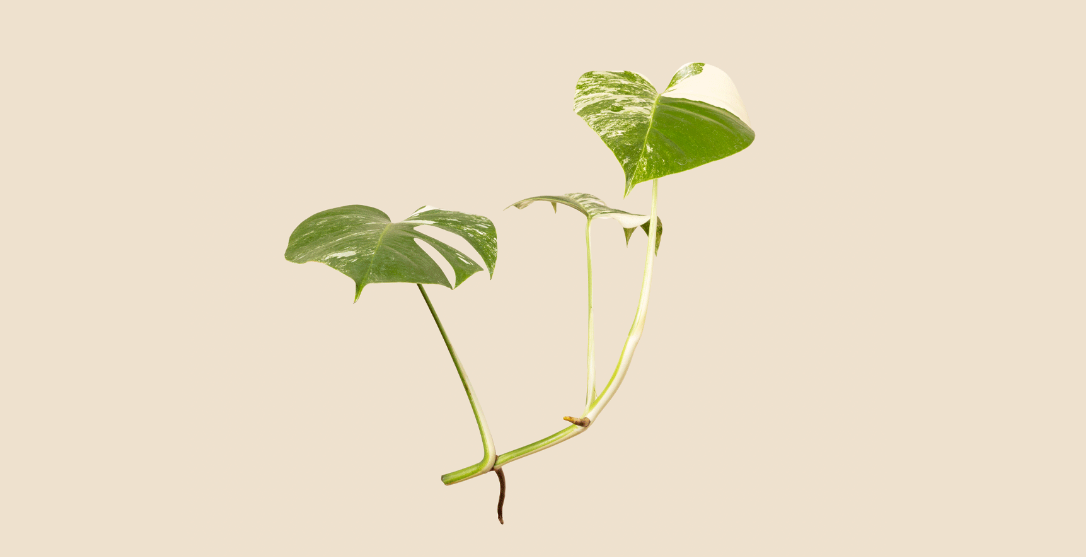
Houseplant Anatomy 101
Read in: 3 min
Read in: 3 min
As a plant parent, knowing the anatomy of your houseplants can significantly enhance your ability to care for them. Understanding the different parts of a plant and their functions will help you diagnose issues, propagate successfully, and provide the best environment for your green friends to thrive.
The stem is the main structural axis of a plant, providing support and transporting nutrients and water between the roots and leaves. It acts as the plant's backbone, holding it upright and allowing it to grow towards the light. Stems come in various forms, including woody, herbaceous, climbing, and trailing types, each adapted to different environments and functions.
In addition to support, the stem houses vascular tissues known as xylem and phloem. The xylem carries water and dissolved minerals from the roots to the rest of the plant, while the phloem distributes the sugars produced during photosynthesis. This transportation system is vital for the plant's growth and survival.
Stems also play a role in reproduction and propagation. Many houseplants can be propagated through stem cuttings - check out Propagation 101 for the how-to! Understanding the structure and function of the stem can help you identify the best places to take cuttings and increase your propagation success rate.
The petiole is the slender stalk that connects the leaf blade to the stem. It acts as a lifeline for the leaf, transporting water, nutrients, and photosynthetic products between the leaf and the rest of the plant. The petiole also provides flexibility, allowing the leaf to move and position itself to capture maximum sunlight.
In some plants, the petiole can be quite long, providing an elegant, arching appearance, while in others, it might be short and stubby. The length and flexibility of the petiole can influence how a plant absorbs light and copes with environmental conditions such as wind or shading from other plants.
Petiole health is crucial for the overall well-being of the plant. Damage or disease affecting the petiole can hinder nutrient transport, leading to leaf drop or reduced photosynthetic efficiency. When inspecting your houseplants, check the petioles for signs of pests, damage, or disease to ensure they’re up to par.
Leaves are the primary site of photosynthesis, the process by which plants convert light energy into chemical energy. They come in various shapes, sizes, and textures, each adapted to optimize light absorption and gas exchange. The leaf blade, or lamina, is typically broad and flat, maximizing the surface area exposed to sunlight.
The leaf surface is dotted with tiny pores called stomata, which regulate gas exchange and water vapor release. These pores open and close in response to environmental conditions, balancing the plant's need for CO2 for photosynthesis and the prevention of excessive water loss.
Healthy leaves are vital for a plant's growth and energy production. Yellowing, browning, or wilting leaves can indicate issues such as nutrient deficiencies, overwatering, or pest infestations. Regularly inspecting and maintaining leaf health ensures your plant can efficiently produce the energy it needs to thrive.
Spotted one of these symptoms? Wondering why your plant is struggling? Check out our guide here!
Nodes are the points along the stem where leaves, branches, and aerial roots originate. They are crucial growth junctions, housing the plant's meristematic tissue, which contains undifferentiated cells capable of dividing and forming new growth. Nodes play a significant role in vegetative propagation, as cuttings with at least one node are more likely to develop roots and new shoots.
The spacing between nodes, known as internodes, varies among plant species and can influence the plant's overall shape and growth habit. Short internodes result in compact, bushy growth, while long internodes lead to a more elongated, vining appearance.
Recognizing and understanding nodes is essential for successful pruning and propagation. When taking cuttings, ensure that each cutting has at least one node, as this will increase the likelihood of rooting and developing into a new plant. Similarly, pruning just above a node can encourage branching and fuller growth.
Aerial roots are roots that grow above the ground, typically emerging from the stem or branches. These roots serve various functions, including anchoring the plant, absorbing moisture and nutrients from the air, and aiding in climbing or spreading. They are commonly found in epiphytic plants, such as orchids and certain types of philodendrons, which grow on other plants or structures for support.
In addition to providing physical support, aerial roots help plants access additional resources in their environment. For example, in humid climates, aerial roots can absorb water and nutrients directly from the air, supplementing the plant's needs when soil resources are limited.
When caring for plants with aerial roots, it's important to maintain high humidity levels and provide structures for the roots to cling to, such as moss poles or trellises.
















